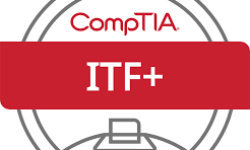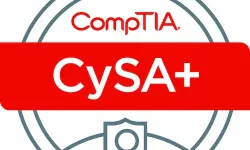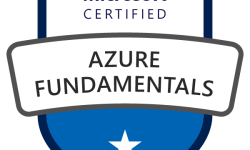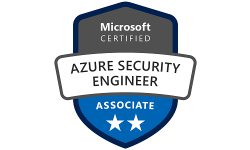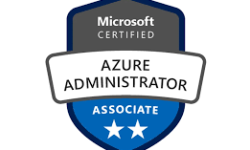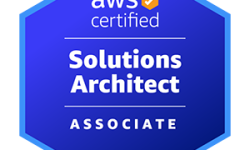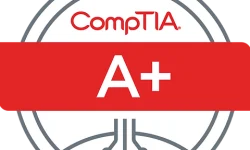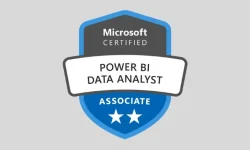Course Outline
- Overview of the course and learning objectives
- Perspectives on Networking
- TCP/IP Networking Model
- Data Encapsulation Terminology
- Review
- Overview of LANs
- Building Physical Ethernet LANs with UTP
- Building Physical Ethernet LANs with Fiber
- Sending Data in Ethernet Networks
- Review
- Wide-Area Networks
- IP Routing
- Other Network Layer Features
- Review
- Accessing the Cisco Catalyst Switch CLI
- Configuring Cisco IOS Software
- Review
- LAN Switching Concepts
- Verifying and Analyzing Ethernet Switching
- Review
- Securing the Switch CLI
- Enabling IPv4 for Remote Access
- Miscellaneous Settings Useful in the Lab
- Review
- Configuring Switch Interfaces
- Analyzing Switch Interface Status and Statistics
- Review
- Virtual LAN Concepts
- VLAN and VLAN Trunking Configuration and Verification
- Troubleshooting VLANs and VLAN Trunks
- Review
- STP and RSTP Basics
- Details Specific to STP (and Not RSTP)
- Rapid STP Concepts
- Review
- Understanding RSTP Through Configuration
- Configuring Layer 2 EtherChannel
- Review
- Introduction to Subnetting
- Analyze Subnetting and Addressing Needs
- Make Design Choices
- Plan the Implementation
- Review
- Classful Network Concepts
- Practice with Classful Networks
- Review
- Subnet Mask Conversion
- Identifying Subnet Design Choices Using Masks
- Review
- Defining a Subnet
- Analyzing Existing Subnets: Binary
- Analyzing Existing Subnets: Decimal
- Practice Analyzing Existing Subnets
- Review
- Installing Cisco Routers
- Enabling IPv4 Support on Cisco Router Interfaces
- Review
- IP Routing
- Configuring IP Addresses and Connected Routes
- Configuring Static Routes
- IP Forwarding with the Longest Prefix Match
- Review
- VLAN Routing with Router 802.1Q Trunks
- VLAN Routing with Layer 3 Switch SVIs
- VLAN Routing with Layer 3 Switch Routed Ports
- Review
- Problem Isolation Using the ping Command
- Problem Isolation Using the traceroute Command
- Telnet and SSH
- Review
- Comparing Dynamic Routing Protocol Features
- OSPF Concepts and Operation
- OSPF Areas and LSAs
- Review
- Implementing Single-Area OSPFv2
- Using OSPFv2 Interface Subcommands
- Additional OSPFv2 Features
- Review
- OSPF Network Types
- OSPF Neighbor Relationships
- Review
- Introduction to IPv6
- IPv6 Addressing Formats and Conventions
- Review
- Global Unicast Addressing Concepts
- Unique Local Unicast Addresses
- Review
- Implementing Unicast IPv6 Addresses on Routers
- Special Addresses Used by Routers
- Review
- Connected and Local IPv6 Routes
- Static IPv6 Routes
- The Neighbor Discovery Protocol
- Review
- Comparing Wired and Wireless Networks
- Wireless LAN Topologies
- Other Wireless Topologies
- RF Overview
- Review
- Autonomous AP Architecture
- Cloud-based AP Architecture
- Split-MAC Architectures
- Comparing Wireless LAN Controller Deployments
- Review
- Anatomy of a Secure Connection
- Wireless Client Authentication Methods
- Wireless Privacy and Integrity Methods
- WPA, WPA2, and WPA3
- Review
- Connecting a Cisco AP
- Accessing a Cisco WLC
- Connecting a Cisco WLC
- Configuring a WLAN
- Review
- Overview of advanced topics
- TCP/IP Layer 4 Protocols: TCP and UDP
- TCP/IP Applications
- Review
- IPv4 Access Control List Basics
- Standard Numbered IPv4 ACLs
- Practice Applying Standard IP ACLs
- Review
- Extended Numbered IP Access Control Lists
- Named ACLs and ACL Editing
- Review
- Security Terminology
- Common Security Threats
- Controlling and Monitoring User Access
- Developing a Security Program to Educate Users
- Review
- Securing IOS Passwords
- Firewalls and Intrusion Prevention Systems
- Review
- Port Security Concepts and Configuration
- Port Security Violation Modes
- Review
- Dynamic Host Configuration Protocol
- Identifying Host IPv4 Settings
- Review
- DHCP Snooping
- Dynamic ARP Inspection
- Review
- System Message Logging (Syslog)
- Network Time Protocol (NTP)
- Analyzing Topology Using CDP and LLDP
- Review
- Perspectives on IPv4 Address Scalability
- Network Address Translation Concepts
- NAT Configuration and Troubleshooting
- Review
- Introduction to QoS
- Classification and Marking
- Queuing
- Shaping and Policing
- Congestion Avoidance
- Review
- First Hop Redundancy Protocol
- Simple Network Management Protocol
- FTP and TFTP
- Review
- Analyzing Campus LAN Topologies
- Small Office/Home Office
- Power over Ethernet (PoE)
- Review
- Metro Ethernet
- Multiprotocol Label Switching (MPLS)
- Internet VPNs
- Review
- Server Virtualization
- Cloud Computing Services
- WAN Traffic Paths to Reach Cloud Services
- Review
- SDN and Controller-Based Networks
- Examples of Network Programmability and SDN
- Comparing Traditional Versus Controller-Based Networks
- Review
- SDA Fabric, Underlay, and Overlay
- DNA Center and SDA Operation
- DNA Center as a Network Management Platform
- Review
- REST-Based APIs
- Data Serialization and JSON
- Review
- Device Configuration Challenges and Solutions
- Ansible, Puppet, and Chef Basics
- Review
- Advice About the Exam Event
- CCNA Practice Labs
- Scheduling and Information
- Videos Sorted by Volume


